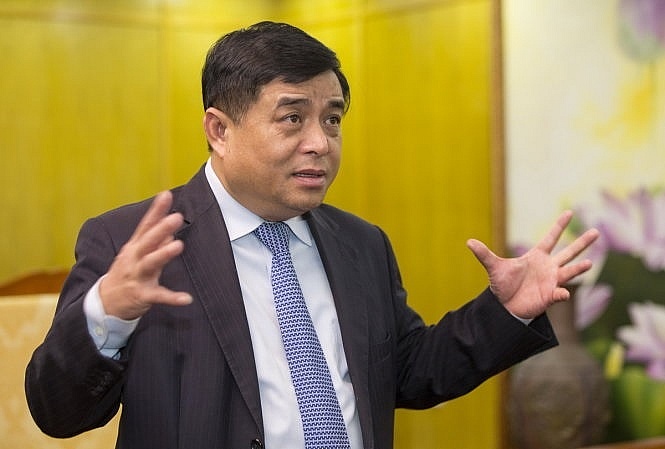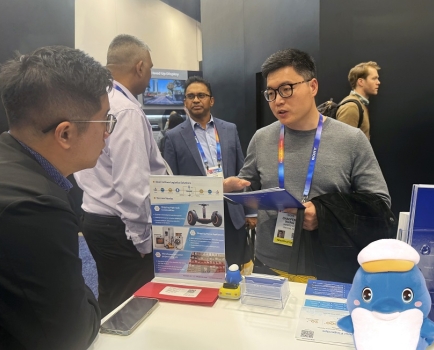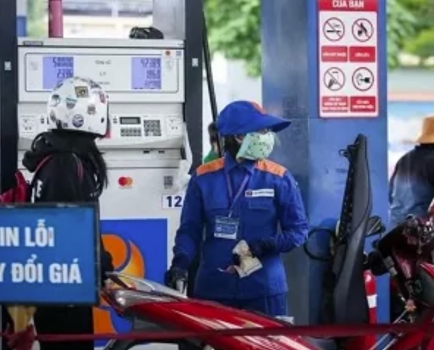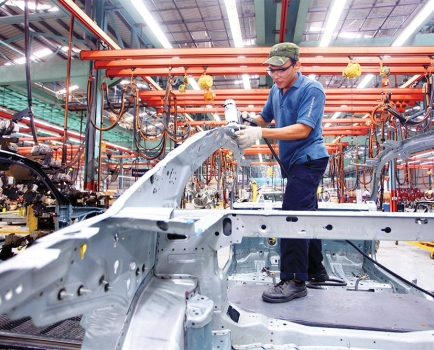Tech goals require teamwork
Tue, 24 Dec 2024 13:32:00 | Print | Email Share:
Following rapid growth over the past 20 years, the global semiconductor industry continued to accelerate strongly in 2024 and reached a value of nearly $600 billion. The demand for chips serving AI is rising high, the electric vehicle industry is developing rapidly, and 5G network coverage is increasing the demand for chips.
Moreover, after the chip shortage in 2021, the supply chain has warmed up, with numerous investments in new chip factories in the US, Europe, and Asia. New manufacturing technology and advanced packaging are beginning to be applied under the leadership of a few technology corporations such as TSMC and Samsung. Countries continue to provide large support packages for the semiconductor industry.
| Nguyen Chi Dung, minister of Planning and Investment, photo: baodautu.vn |
In the trend of diversifying supply chains and complex geopolitical developments around the world, Vietnam is emerging as an attractive destination for investors in the semiconductor industry thanks to high-quality human resources with competitive costs, strong investment and upgrading of infrastructure, increasingly open and transparent policies, and the high political determination of the Party and state leaders.
To call for investment and develop a semiconductor ecosystem, the Ministry of Planning and Investment (MPI) has contacted and worked with many technology corporations such as Qualcomm, Google, Meta, and LAM Research, and has a specific plan to shift the supply chain to Vietnam, build research and development (R&D) centres, and expand investment and production in Vietnam.
Accordingly, the country currently has 174 foreign-invested projects in the semiconductor sector, with total registered capital of nearly $11.6 billion.
The MPI has also been assigned to coordinate with relevant agencies to establish two groups for cooperation implementation and negotiation with tech corporation Nvidia. On December 5, Vietnamese government and Nvidia signed an MoU on the establishment of both the Vietnam R&D Centre and AI Data Centre, which is critical for Vietnam to leap forward in technology, with a large spillover effect, attracting the attention of other high-tech investors, and retaining talent in semiconductors and AI.
Immediately after signing the MoU, Nvidia set out to immediately recruit employees, build the leadership structure, and call for domestic and foreign talents to work at the R&D centre. The move saw a big buzz in the technology business community, including disappointment from the Thai press about that nation’s failure to engage Nvidia.
Vietnam is also prioritising cooperation in semiconductors and AI as key components of its partnerships with the US, India, and South Korea. The country is effectively leveraging opportunities by strengthening technology ties with key partners, including the US, South Korea, and Japan. Specifically, the International Technology Security and Innovation Fund under the US CHIPS Act is supporting Vietnam by training 120 lecturers, 4,000 students, and transferring chip packaging and testing programmes to 20 training facilities nationwide.
Despite these achievements, significant challenges remain. The semiconductor sector requires substantial capital investment, highly skilled personnel, and advanced technologies. Fierce global competition for semiconductor investment has resulted in some corporations conducting preliminary surveys in Vietnam but delaying commitments as they await favourable incentives and support mechanisms.
Regarding facilities and infrastructure, despite efforts to improve and build new roads, railways, seaports, and airports, there is a lack of synchronisation between regions and localities, and transporting goods is slow. Unstable power, water, and good wastewater treatment systems are concerns to investors. Several large corporations such as Samsung and Intel have proposed being provided with stable and sustainable renewable energy at preferential prices. However, Vietnam’s clean energy supply is still limited and faces operational challenges.
While Vietnam has established bilateral semiconductor cooperation with key partners, implementation has been uneven. For example, cooperation programmes with the United States have primarily focused on packaging and testing, while the upstream stages of semiconductor production remain limited.
The approved strategy and programmes for semiconductor development are still in their initial stages. Ministries, agencies, localities, universities, and enterprises are studying their implementation. To meet strategic goals, relevant agencies must urgently execute assigned tasks.
National and local laboratory investments have faced delays due to the novelty of the concept for some universities. The MPI has issued guidance urging universities and competent agencies to finalise project proposals by the end of the year. Agencies must consult semiconductor experts to ensure the proposals are comprehensive and submitted promptly for review.
To continue developing the semiconductor industry, the MPI proposes focusing on personnel development, international cooperation, and working with large corporations in semiconductors and AI, especially in advanced packaging.
The three pillars of Vietnam’s semiconductor strategy – mechanisms, infrastructure, and qualified people – must be strengthened. The nation has to seek engagement with global talent, particularly its diaspora, to contribute to the domestic semiconductor ecosystem.
Vietnam cannot reach this goal alone. At this important stage, we need fast and strong cooperation with countries, economies, and giants in the world of semiconductors, to take advantage and become a key country in developing the semiconductor industry worldwide, all while looking towards becoming an AI hub for the future.
By: Nguyen Chi Dung/ Vietnam Investment Review
Source: https://vir.com.vn/tech-goals-require-teamwork-120176.html
---------------------------------------------
Same category News :














